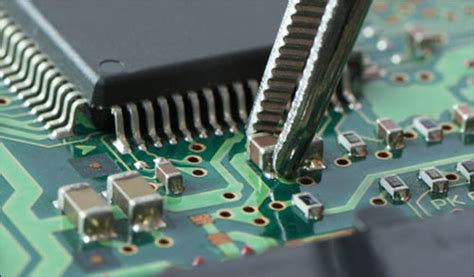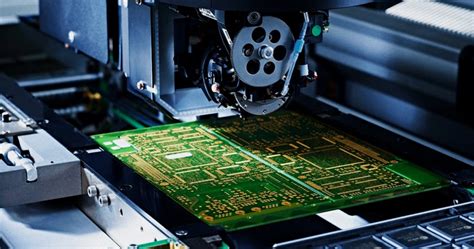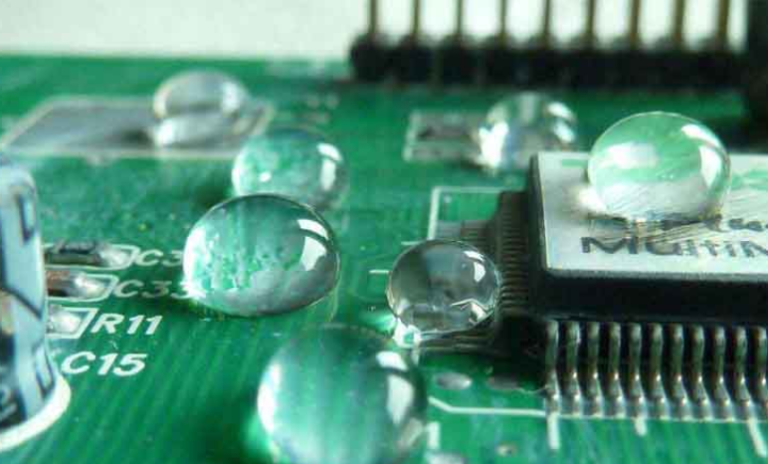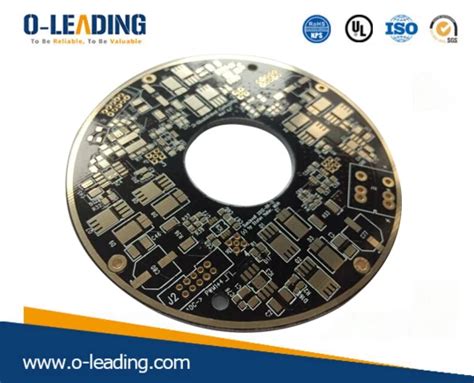Streamlining Prototype Electronics Assembly for Efficiency
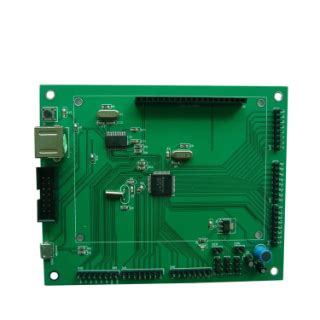
Key Takeaways
Efficient prototype electronics assembly is essential for fostering innovation and maintaining competitiveness in the electronics industry. Understanding the intricacies of pcb assembly can significantly impact the overall development process. Emphasizing best practices, such as meticulous pcba design review and careful planning of assembly sequences, helps to minimize errors and streamline workflows. Incorporating innovative techniques, such as automated soldering and advanced testing methodologies, also enhances the efficiency of the assembly process. Essential tools like computer-aided design (CAD) software and real-time monitoring systems enable engineers to identify bottlenecks quickly and optimize performance.
Incorporating lean manufacturing principles can lead to substantial cost savings while maintaining product quality. "Reducing waste is crucial for maximizing productivity," points out industry experts who highlight that even small adjustments in process flows can yield significant benefits. By utilizing a combination of these strategies, companies can not only increase their assembly efficiency but also accelerate time-to-market for their products.
Additionally, examining successful case studies can provide valuable insights into practical implementations of streamlined processes in pcb assembly. These real-world examples underscore how adopting a proactive approach in refining workflows can lead to remarkable improvements in productivity and cost-effectiveness. Overall, investing time and resources into enhancing pcba techniques will likely yield fruitful results for electronics developers striving for excellence in a competitive landscape.
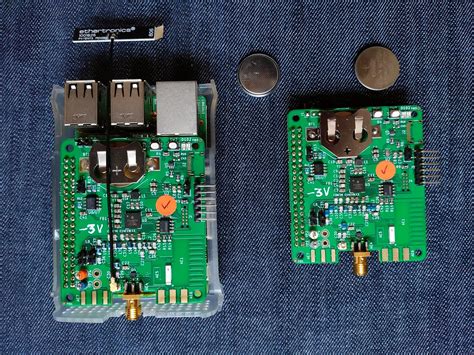
Understanding the Importance of Prototype Electronics Assembly
In today’s fast-paced technological landscape, prototype electronics assembly plays a pivotal role in accelerating the development cycle of new products. This critical stage focuses on creating working models of electronic devices, enabling designers and engineers to test functionalities and iterate designs efficiently. Properly executed, pcb assembly facilitates early detection of potential flaws, allowing teams to make informed adjustments before committing to full-scale production. The significance of achieving high-quality pcba cannot be overstated, as it greatly influences the overall reliability and performance of the final product. Furthermore, an optimized assembly process not only enhances productivity but also reduces lead times and costs associated with rushed changes in later phases. In summary, a thorough understanding of prototype electronics assembly is essential for any organization looking to innovate and stay competitive within the electronics market. By honing this stage through effective practices and embracing technology-driven solutions, companies can set a solid foundation for success in their product development endeavors.
Best Practices for Streamlined Assembly Processes
To enhance the efficiency of prototype electronics assembly, implementing best practices is crucial. One effective approach involves optimizing the pcb assembly workflow through meticulous planning and organization. This begins with clearly defining assembly requirements and ensuring that all components are readily available. By maintaining an organized work environment, teams can minimize time spent searching for materials, thereby reducing delays in production.
Moreover, employing standardized processes is essential for achieving consistency and speed in pcba. Documenting each step of the prototype assembly can help identify bottlenecks and streamline operations. Training team members to follow these procedures ensures that everyone is on the same page, leading to improved collaboration and effectiveness.
Additionally, regularly reviewing and adjusting assembly protocols can lead to continuous improvement. Gathering feedback from team members about challenges encountered during the assembly process can provide valuable insights that inform changes in methodology or tooling.
Finally, integrating automation where feasible can significantly enhance productivity. Automation tools designed for pcb assembly not only reduce manual labor but also improve precision, which is vital for maintaining quality standards in electronics development. By adopting these best practices, organizations can substantially increase their efficiency in prototype electronics assembly while optimizing resource utilization.
Innovative Techniques to Enhance Assembly Efficiency
Enhancing efficiency in prototype electronics assembly is paramount for organizations striving to accelerate product development without compromising quality. One of the leading innovations in this area is the application of automated PCB assembly processes, which can significantly reduce assembly time while minimizing the risk of human error. Integrating robotics and specialized machinery not only increases precision but also allows for scalable production, accommodating various batch sizes with ease. Furthermore, leveraging advanced software for PCBA design and simulation can streamline workflow by identifying potential issues prior to physical assembly, thus avoiding costly revisions later in the development process.
Another noteworthy technique involves implementing just-in-time manufacturing principles. By coordinating with suppliers to ensure that materials are delivered only when needed, companies can significantly reduce inventory costs and enhance the flow of operations. Additionally, employing modular design practices facilitates easier upgrades and repairs of electronic components by ensuring that parts can be quickly replaced or modified without extensive rework.
Including thorough training programs for assembly teams fosters a culture of innovation and continuous improvement, encouraging workers to collaborate on problem-solving initiatives aimed at enhancing process efficiency. Tracking performance metrics through real-time data analytics equips teams with critical insights into workflow bottlenecks and inefficiencies, allowing for timely adjustments that boost overall productivity. These strategies combined create a dynamic environment where efficiency thrives, ultimately leading to faster time-to-market for new electronic products while maintaining high standards of quality throughout the PCBA process.
Essential Tools for Prototype Electronics Workflows
In the world of prototype electronics assembly, having the right tools can significantly impact efficiency and productivity. A well-equipped workspace ensures that the assembly process is not only swift but also precise. Key tools include soldering stations, which are crucial for connecting components on a PCB (Printed Circuit Board), as well as automatic pick and place machines that expedite the positioning of components on the PCBA (Printed Circuit Board Assembly).
In addition, using dedicated software for design automation can streamline the design-to-production workflow, minimizing errors associated with manual processes. Another vital tool is a reliable multimeter for testing and troubleshooting during various stages of assembly, ensuring that quality control is maintained at each step.
Here’s a table summarizing some essential tools:
| Tool | Functionality |
|---|---|
| Soldering Station | For connecting electronic components |
| Automatic Pick and Place | For quick component placement on PCBs |
| Design Automation Software | To assist in efficient design processes |
| Multimeter | For testing and quality assurance |
Implementing these tools can reduce assembly time and costs while increasing overall efficiency. By investing in high-quality equipment and leveraging technology, teams can enhance their workflows in prototype electronics work significantly.
Cost-Effective Strategies in Electronics Development
In the competitive landscape of electronics development, implementing cost-effective strategies is essential for optimizing prototype electronics assembly and ensuring successful outcomes. One of the primary ways to achieve this is by leveraging advanced pcb assembly techniques that minimize material waste and maximize efficiency during the production cycle. For instance, employing automated pick-and-place equipment can significantly reduce labor costs and improve precision in assembling components. Additionally, utilizing PCBA (Printed Circuit Board Assembly) services can streamline logistics by allowing for bulk manufacturing, which often results in overall cost reduction.
Another effective approach is to engage in concurrent engineering practices, which helps teams identify potential issues early in the design process. This proactive method not only diminishes the likelihood of costly redesigns but also accelerates time-to-market. Furthermore, investing in simulation software allows engineers to test designs virtually before committing to physical prototypes, thus enabling further savings.
Lastly, fostering strong relationships with suppliers can yield favorable pricing and flexible terms for materials critical to prototype electronics assembly. By integrating these strategies into their workflows, companies can enhance their overall productivity while maintaining a strong focus on cost management. As these methods become standard practices within electronics development, organizations will find themselves better positioned to adapt to market demands efficiently.

Case Studies: Successful Implementations of Streamlined Processes
The implementation of streamlined processes in prototype electronics assembly has shown remarkable success across various industries, particularly in PCB assembly projects. One notable case involves a leading consumer electronics company that adopted advanced automation techniques in its PCBA operations. By integrating automated pick-and-place machines and using intelligent software for inventory management, the company was able to reduce assembly time by nearly 30%. This transition not only optimized the production workflow but also significantly decreased errors typically associated with manual assembly.
Similarly, an emerging technology firm specializing in IoT devices implemented a lean manufacturing approach alongside real-time data analytics to enhance its prototype electronics assembly efficiency. By adopting methodologies such as Kanban and continuous improvement cycles, the firm effectively minimized waste and improved response times to design changes. This strategy elevated their productivity levels while ensuring high-quality outputs in their pcb assembly processes.
Another illustrative example can be found in the automotive industry, where an OEM (Original Equipment Manufacturer) streamlined its development for electronic control units (ECUs). The manufacturer leveraged rapid prototyping tools to accelerate the design-to-production timeline of circuit boards. The adoption of these innovative techniques led to a 40% reduction in time-to-market for new products, proving essential in a sector where speed and efficiency are crucial for competitive advantage.
These case studies underscore that effective implementations of streamlined processes not only enhance productivity but also foster innovation within the pcba domain. By focusing on automation, lean practices, and data analytics, companies can achieve significant improvements in their workflows while maintaining high standards of quality and responsiveness.
The Future of Electronics Assembly: Trends and Innovations
As the landscape of electronics manufacturing evolves, the pcb assembly process is becoming increasingly sophisticated, embracing trends and innovations that drive efficiency. One significant trend is the integration of automation and robotics within pcba (printed circuit board assembly) lines. These advancements facilitate accurate placement and soldering, reducing human error and accelerating production speed. Moreover, the use of smart technologies, such as the Internet of Things (IoT), enables real-time monitoring and data collection, which empowers manufacturers to identify bottlenecks swiftly and implement corrective measures.
Another noteworthy innovation is the adoption of modular assembly practices. By creating standardized components that can be easily swapped or upgraded, manufacturers can significantly decrease assembly time while enhancing adaptability to market demands. This modular approach not only streamlines production but also leads to cost savings by minimizing waste.
Furthermore, advancements in simulation software have transformed the design phase of pcb assembly. Engineers can now simulate various assembly scenarios to predict potential issues before physical prototypes are created. This predictive capability reduces time-to-market and encourages a more collaborative approach between design and manufacturing teams.
Ultimately, as these trends continue to shape the future of electronics assembly, organizations that adopt a forward-thinking mindset will be better positioned to thrive in an increasingly competitive marketplace. By leveraging innovations in automation, modularity, and simulation, they can enhance productivity while delivering high-quality products that meet evolving customer needs.
Measuring Productivity: Key Performance Indicators in Assembly Efficiency
In the realm of pcb assembly, establishing clear Key Performance Indicators (KPIs) is essential for gauging the efficiency of assembly processes. These metrics allow teams to analyze performance, identify bottlenecks, and ultimately enhance productivity. Key performance indicators such as the cycle time, yield rates, and defect rates provide valuable insights into the effectiveness of a given process. For instance, a reduced cycle time indicates a more efficient pcba workflow, while high yield rates signal fewer defects and optimized processes. Monitoring these KPIs can aid in understanding resource allocation and workforce effectiveness on assembly lines. Furthermore, incorporating real-time data analytics enhances decision-making capabilities, enabling teams to respond swiftly to emerging challenges or inefficiencies. Regularly reviewing these performance measures contributes to a culture of continuous improvement within electronics assembly operations. By focusing on these critical metrics, companies can ensure that their prototype electronics assembly processes remain competitive and productive in an ever-evolving market landscape.
Conclusion
In concluding our discussion on enhancing the efficiency of prototype electronics assembly, it is crucial to recognize that the integration of effective strategies and best practices can significantly impact the overall development process. By focusing on optimizing pcb assembly techniques, teams can identify and mitigate common obstacles that often lead to delays and increased costs. The implementation of innovative tools specifically tailored for pcba workflows not only streamlines operations but also fosters a more agile response to market demands. Moreover, leveraging data-driven methodologies for measuring productivity through key performance indicators ensures that continuous improvement remains at the forefront of assembly processes. As technology evolves, those engaged in prototype electronics assembly must remain vigilant, adapting to new trends and innovations that promise to reshape how components are assembled and integrated. Ultimately, a commitment to enhancing efficiency within this field will pave the way for more sustainable practices and higher-quality products.
FAQs
What is prototype electronics assembly?
Prototype electronics assembly refers to the pcb assembly process where electronic components are assembled onto printed circuit boards (PCBs) to create initial models of electronic devices. This step is crucial in the development phase, allowing for testing and refinement before mass production.
Why is efficiency important in prototype electronics assembly?
Efficiency in pcba is vital as it directly impacts turnaround times and project costs. Enhanced processes can lead to quicker iterations, reduced material waste, and ultimately quicker time-to-market for new products.
What are some best practices for streamlined assembly processes?
Best practices include optimizing workflow layouts, ensuring proper training for staff, adhering to strict quality control measures, and utilizing advanced software tools for tracking progress. Implementing these practices can significantly enhance the pcb assembly process.
Which innovative techniques are utilized to enhance assembly efficiency?
Using automation tools such as pick-and-place machines, incorporating real-time monitoring systems, and employing modular designs are innovative techniques that can streamline the overall workflow in pcba.
What essential tools should be used in prototype electronics workflows?
Essential tools include computer-aided design (CAD) software for schematic capture and layout design, prototyping boards for testing circuits, and specialized soldering equipment. These tools facilitate a more efficient pcb assembly process.
For more information on optimizing your PCBA processes and embracing efficient production methods, please visit this link.


